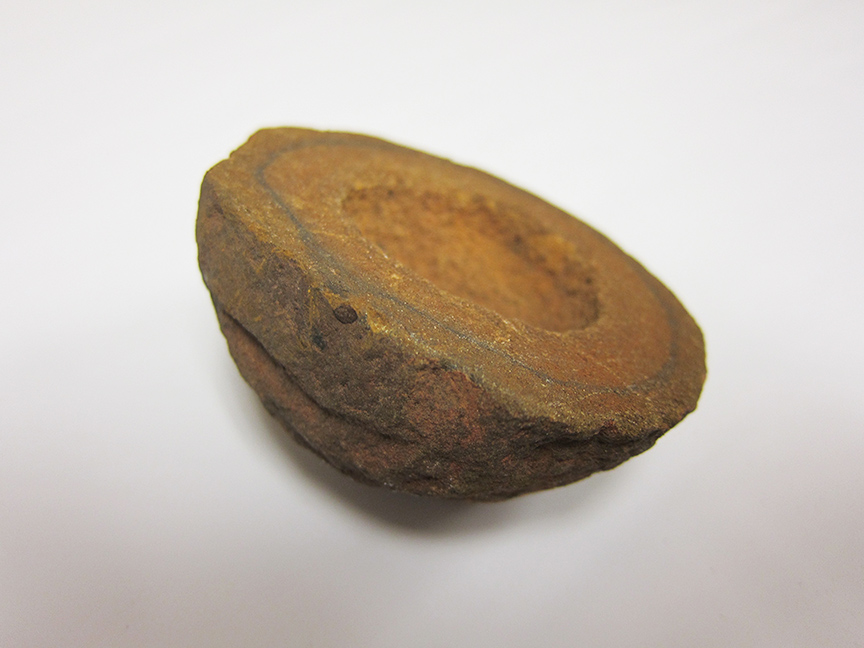Great! However, identifying a meteorite can be tricky. There are a lot of misconceptions about meteorites that can lead the layperson to “false positive” identification. Over the years of examining potential meteorites brought in by enthusiastic amateur meteorite hunters, we’ve found less than 1% to be actual meteorites. In fact, in the last two decades, only five samples have tested positive through our analyses.
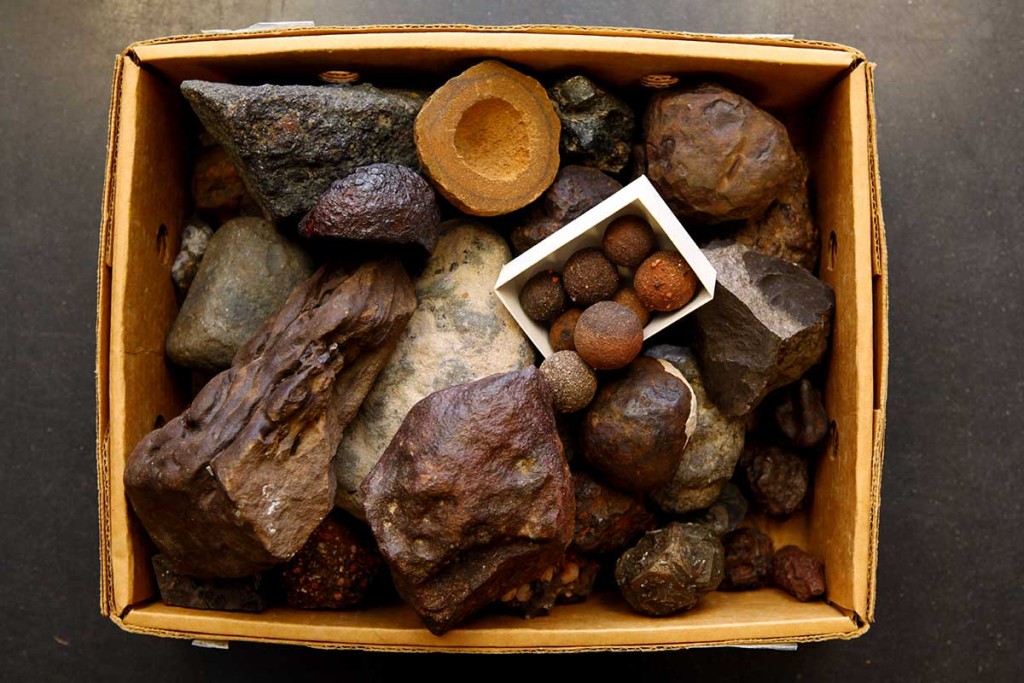
These are just some of the samples in our Monnig Meteorwrong Collection.
So, how can you better assess whether or not your rock is extraterrestrial in origin? Here are some brief tips that you should consider before bringing your sample to us. See if you can distinguish the meteorite from the meteorwrong.
It’s probably NOT a meteorite if…
it appears "burned"
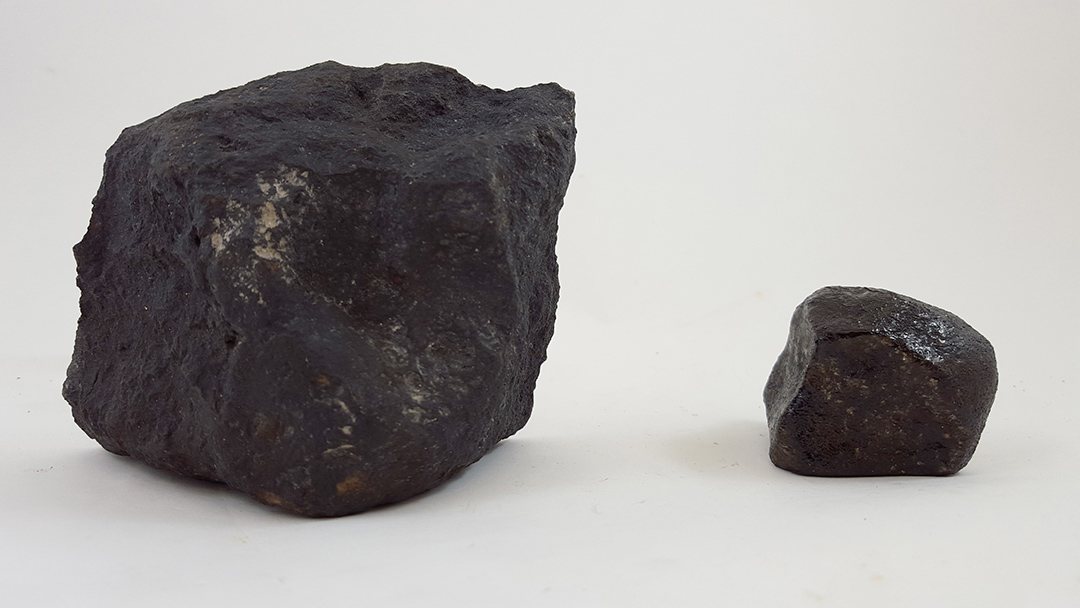
the inside of it is the same color as its surface
it has holes in it
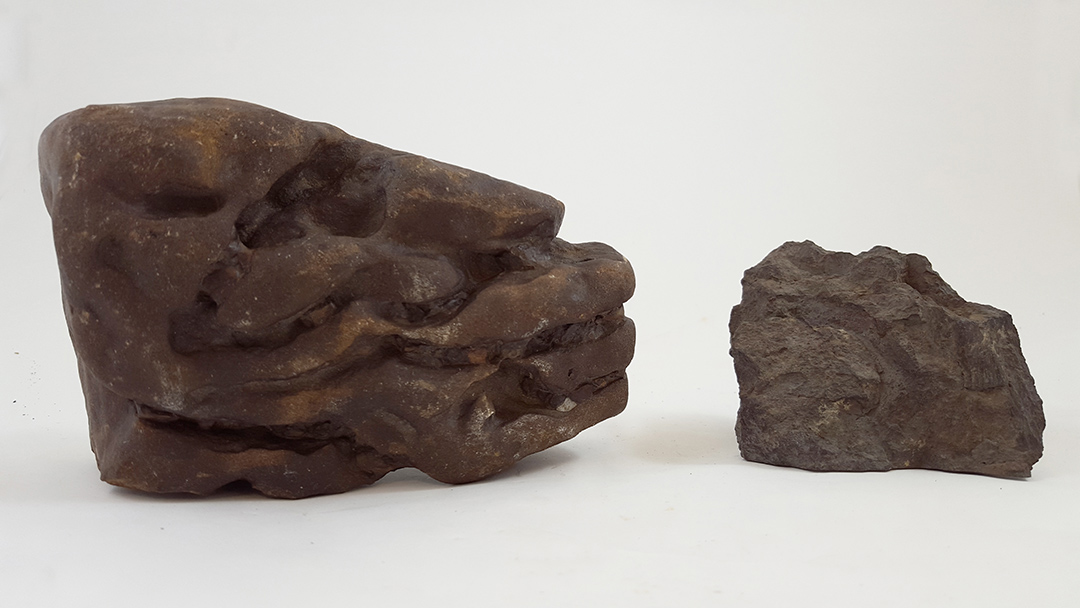
it has flat sides, geometric shape, or is spherical
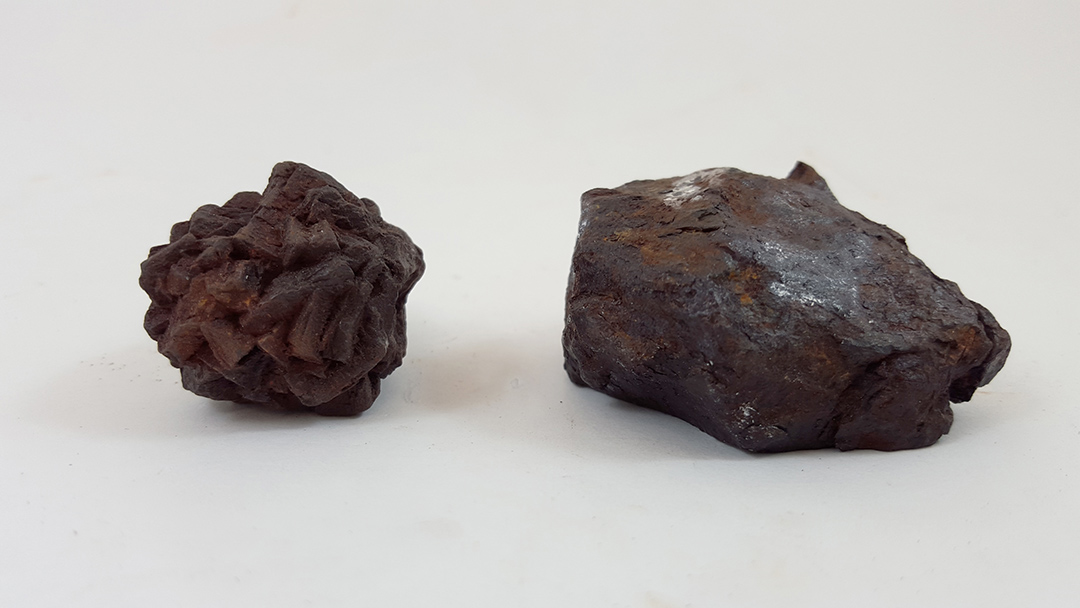
There are many processes on the Earth’s surface that form spherical rocks but these processes do not occur where most meteorites originate. Meteorites are also, in general, not rectangular or square and they do not have flat sides. As a meteorite falls through the atmosphere, the edges and corners are the first things that melt. This process is similar to leaving an ice cube to melt in water. The edges and points of the cube are the first things to melt away.
it looks metallic, but is not very strongly magnetic
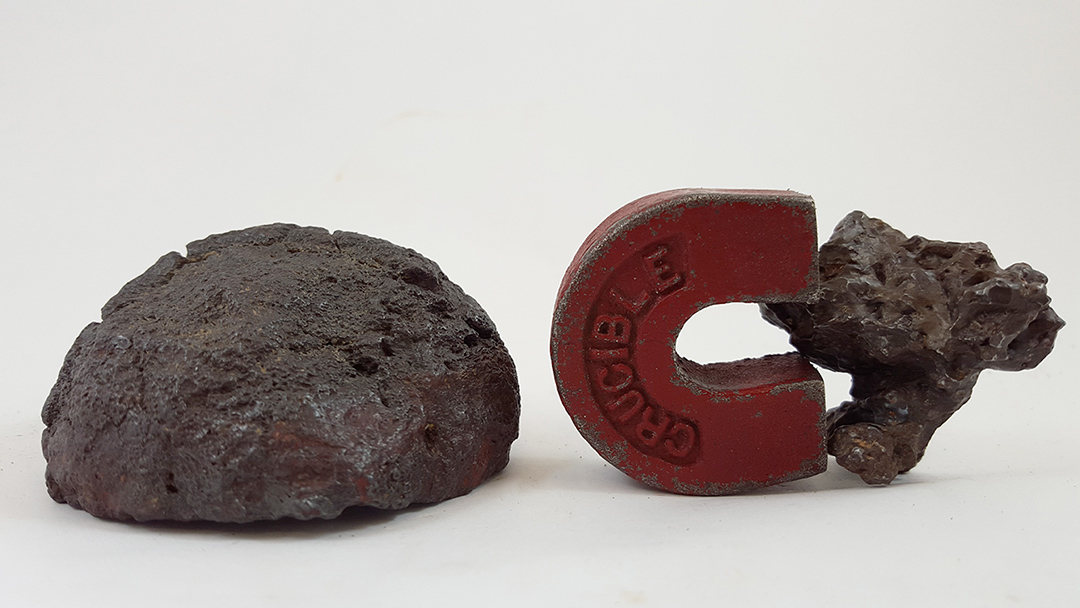
All iron meteorites will attract a magnet. The vast majority of meteorites will attract a magnet to some degree.
it has layers
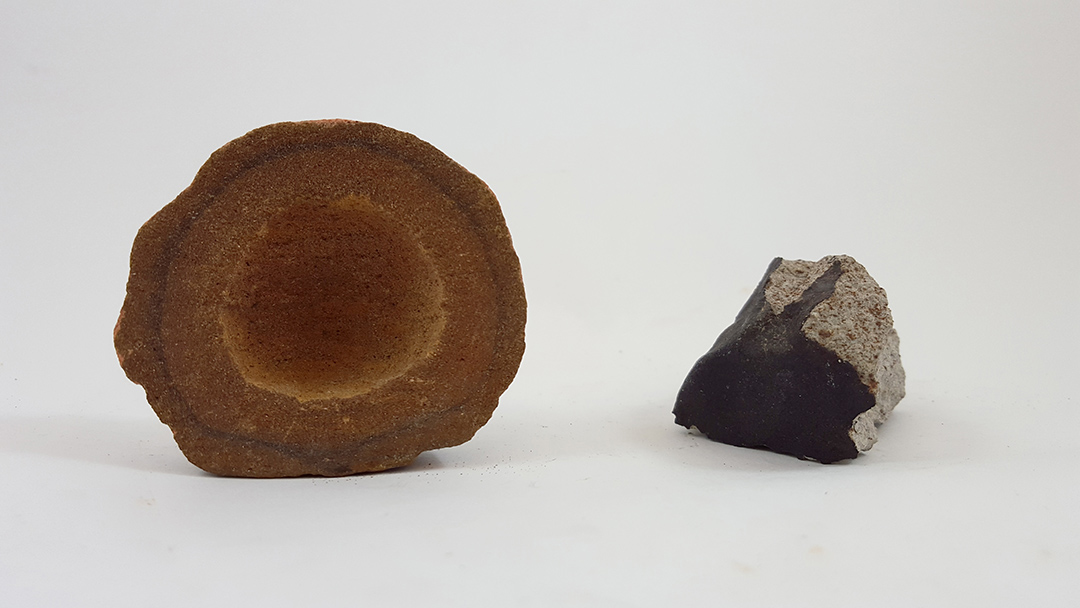
Layers are formed on Earth because of gravity. The vast majority of meteorites come from asteroids that are too small to have any appreciable gravity.
Most meteorites should have the following properties. However, many minerals and rocks from Earth also share these properties, so don’t get TOO excited…
- Strongly magnetic
- Very dense (they feel heavy for their size)
- Possess a fusion crust, which is a thin, dark, glassy coating that will appear different from the material within the rock. Often, fusion crust will be textured with numerous “thumbprint” indentations called regmaclypts, which are produced from friction with air as the meteorite enters the atmosphere.
 Consult our Meteorite Flowchart to better determine if you’ve found a real meteorite.
Consult our Meteorite Flowchart to better determine if you’ve found a real meteorite.
Meteorite Identification Requests
We are not currently offering a meteorite identification service. We will update our website should this become available again in the future.



